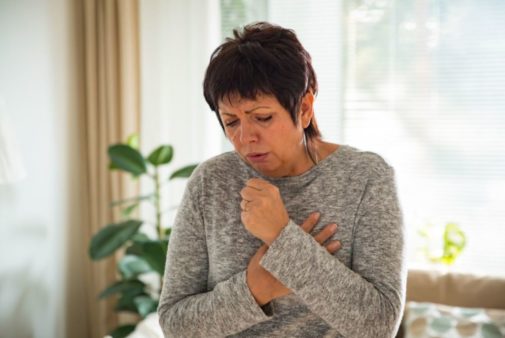Tackling 4 emphysema myths

Nearly 3.5 million Americans are currently diagnosed with emphysema, a type of chronic obstructive pulmonary disease (COPD). This condition develops when the air sacs in your lungs become damaged, leaving you feeling short of breath or with a persistent cough.
“When the air sacs start to break down, your body cannot send enough oxygen to your blood,” explains Dr. Raul Mendoza, pulmonologist at Aurora BayCare Medical Center in Green Bay, Wis. “Many times, emphysema goes unnoticed and can lead to severe complications.”
Dr. Mendoza shares four common myths about emphysema and the truth behind them:
Myth 1: Only smokers develop emphysema.
Fact: Though smoking is the leading cause of COPD and emphysema, non-smokers are also susceptible. If you live or work in an environment with smoke, chemical fumes, dust, or air pollution, you may be at risk for emphysema.
Myth 2: If you don’t smoke or breathe in pollutants, you won’t develop emphysema.
Fact: Even if you don’t smoke, breathing in second-hand smoke from tobacco or marijuana for prolonged periods of time may increase your chances for emphysema. Those who inherit alpha-1 antitrypsin deficiency, a protein deficiency that impacts the health of your lungs, may also be at risk for emphysema and other conditions even if they’ve never been exposed to harsh chemicals.
Myth 3: You’ll notice something is wrong.
Fact: Emphysema occurs gradually, and it often takes many years of heavy exposure to chemicals for lungs to deteriorate. Many people may not inhibit symptoms until they are between the ages of 40 and 60, and some may mistake their lack of breath with getting older.
Myth 4: Once you develop emphysema, you’ll never feel better.
Fact: “Everyone’s body responds differently, and some cases may be more severe than others,” says Dr. Mendoza. Currently, there is no cure for emphysema, but symptoms can be treated with medication, therapies, and procedures, like this FDA-approved endobronchial valve, a minimally-invasive device that closes unhealthy areas of the lung to shift air to more beneficial areas of the lung, making breathing significantly easier for severe emphysema patients.
Other treatment options
If you do happen to be a smoker, quitting is the best thing you can do to treat your symptoms. Other treatment options can be used alongside each other such as: endobronchial valves, steroids, antibiotics, oxygen therapy, and pulmonary rehabilitation. Your doctor can work with you to understand what might work best for you.
Want to learn more about your risk for lung cancer? Take a free online quiz to learn more.
Related Posts
Comments
2 Comments
About the Author
health enews staff is a group of experienced writers from our Advocate Health Care and Aurora Health Care sites, which also includes freelance or intern writers.


















So if the disease is unnoticed, should screening for it be part of every annual physical exam?????
I have COPD (combined – both emphysema and chronic bronchitis) from stupidly smoking for over 60 years before I quit. The bronchitis isn’t too bad and is controlled very well – at least so far – with an over-the-counter medication (Bronkaid). However, emphysema is progressive even under treatment. I treat it with a Spiriva Handihaler (tiotroprium bromide). That’s the only medication I can take to treat emphysema because the others contain one or more medications that I’m allergic to. One of them (Symbicort) almost killed me with an anaphylactic reaction that sent me to the ER because my respiratory passages swelled up and I couldn’t breathe. Now that COVID-19 has arrived and is definitely a pandemic, I’m terrified of getting it because it’s also a respiratory disease. So, on top of my bronchitis and emphysema, catching it could amount to a death sentence for me. I quarantine, leaving the house only when absolutely necessary, and wear a mask when I do go out. I don’t even go to the mailbox in my condo building or answer the door without wearing a mask. Yes, lung disease is dangerous. As to Myth #4 – I’m not a candidate for surgery at my age and my pulmonologist does not consider me a candidate for surgery (nor do two others I consulted for 2nd and 3rd opinions). However, I do breathing exercises and everything else that is recommended to minimize the symptoms such as forced coughing and pursed-lip breathing. Oxygen therapy? Well, I can’t take oxygen either by mask or nasal cannula. I’m apparently sensitive to the stabilizer or something because every time I’ve been given oxygen for any reason I vomit in less than a minute. I can take compressed air, however, and that is noted on my medical chart. As I don’t travel and always go to the same hospital for treatment, emergency or otherwise, it’s not usually a problem.